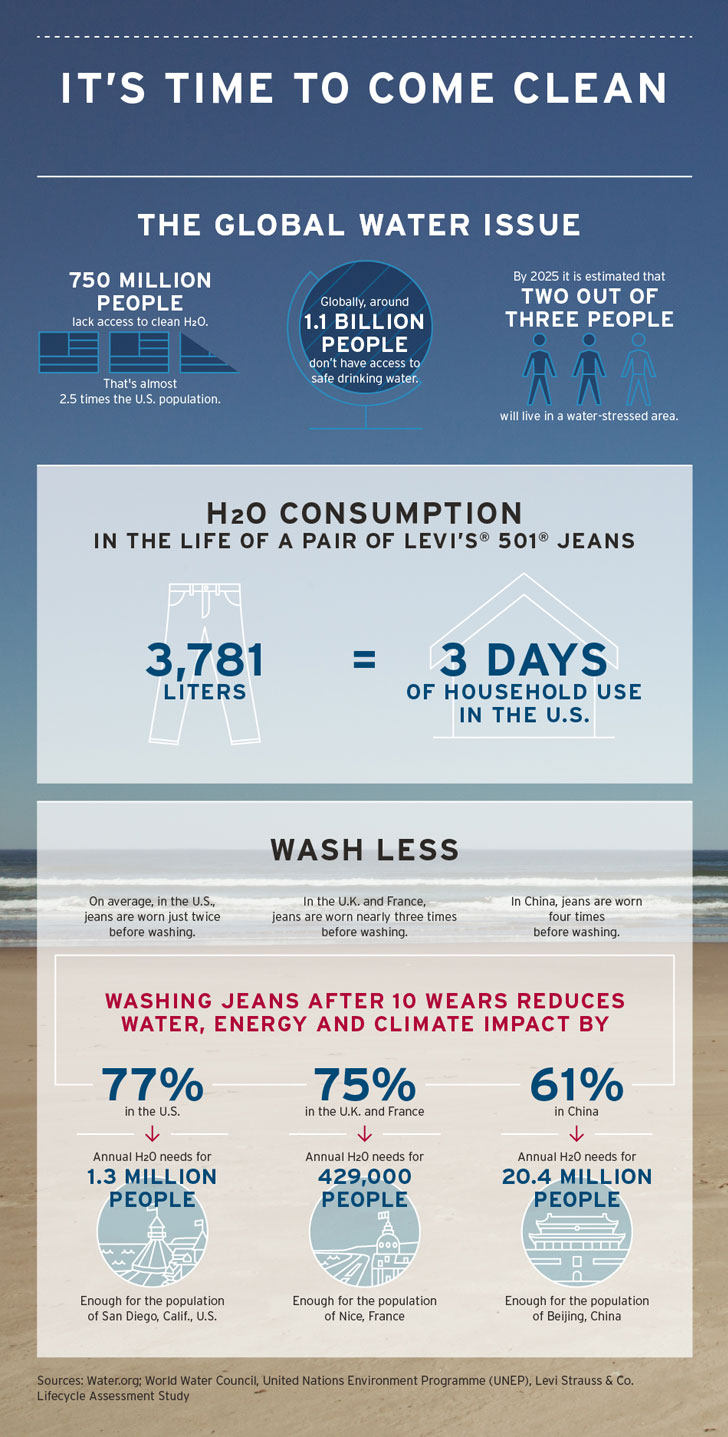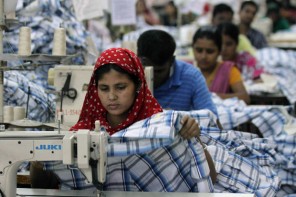Levi Strauss knows one thing for sure, making a pair of jeans is an extremely water intensive process. In a new report made public last week, the denim giant unveiled the results of its latest product life-cycle assessment, an update to its original, first-of-its-kind 2007 study. Despite expanding its scope to include other cotton-producing countries, including China, Brazil, Pakistan, and Australia, Levi’s found that cotton cultivation and consumer use have a near-universal claim on denim’s water footprint. The numbers speak for themselves. Even accounting for regional differences in washing habits, a single pair of jeans uses nearly 3,800 liters of water throughout its lifetime. Roughly 68 percent of that agua stems from fiber production, with consumer care accounting for an additional 23 percent.
A single pair of jeans uses nearly 3,800 liters of water throughout its lifetime
The way we care for our jeans is also responsible for a significant expenditure of energy, culminating in 37 percent of the 33.4 kilograms of carbon dioxide emitted during denim’s life cycle. The LCA reveals some interesting facts about the denim-wearing across the globe, as well. According to researchers, Americans use more water and energy to wash their jeans than their counterparts in China, France, and the United Kingdom.
Chinese consumers wear their jeans an average of four times before tossing them into the wash. If most Americans followed suit, Levi’s says the water and climate change impact from washing jeans could be reduced by a whopping 50 percent.
“It’s time to rethink autopilot behaviors like washing your jeans after every wear because in many cases it’s simply not necessary,” says Chip Bergh, Levi Strauss’s CEO and president, in a statement.
In the run-up to World Water Day on March 22 and Earth Day on April 22, Levi’s is launching an educational initiative to help consumers understand their environmental impact. To find out how your water and energy use compares with others, simply go online to take the “Are You Ready to Come Clean?” quiz. You can further pledge to do your bit by washing your jeans more infrequently.
Water<Less
For its part, Levi’s is working with the Better Cotton Initiative to train farmers to grow cotton using less water. The company will also continue to work toward using less water during the manufacturing phase by expanding its line of H20-sipping Water<Less products.
Levi’s says it aims to make 80 percent of its products using Water<Less techniques by 2020, up from nearly 25 percent today.
According to reports, Levi’s says it has saved 1 billion liters of the water since 2011 through its sustainability schemes, including the “Care Tag for the Planet” clothing-care program it pioneered with Goodwill and its groundbreaking water reuse/recycle standard.
Levi’s says it will use the latest LCA results to inform the company’s future efforts. “Our LCA findings have pushed us as a company to rethink how we make our jeans, and we’re proud that our water stewardship actions to date have saved 1 billion liters of water,” Bergh says. “By engaging and educating consumers, we can fundamentally change the environmental impact of apparel and, ideally, how consumers think about the clothes they wear every day.”
Source: Ecouterre












